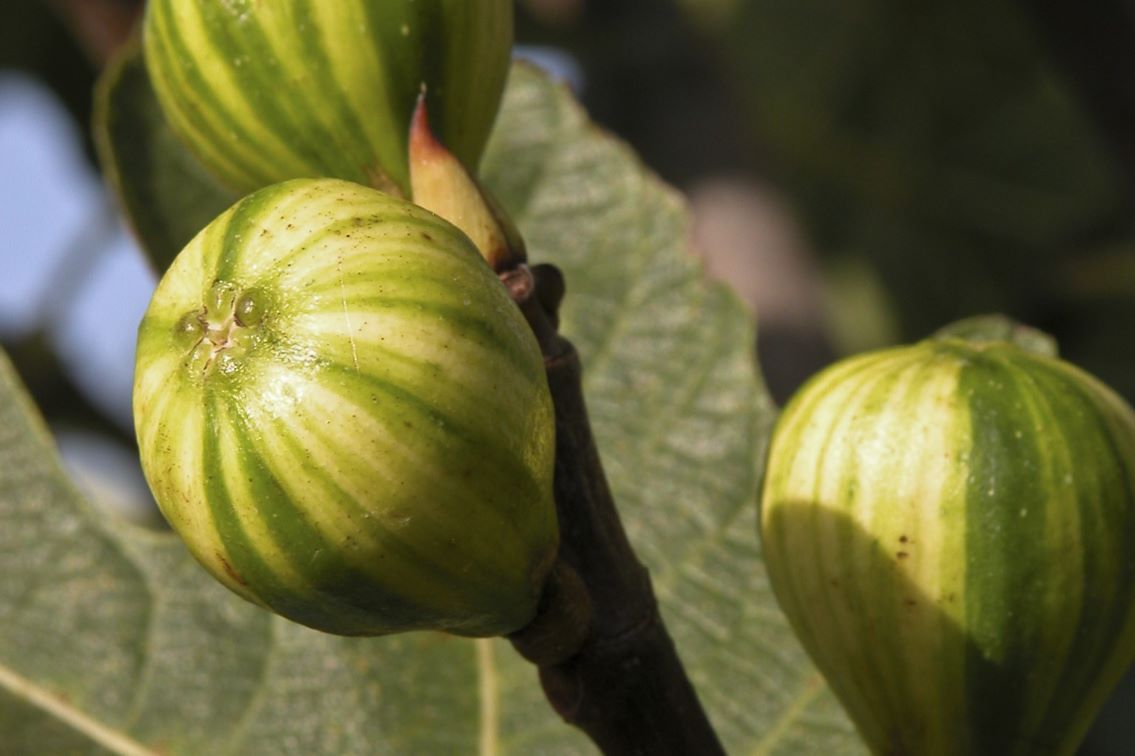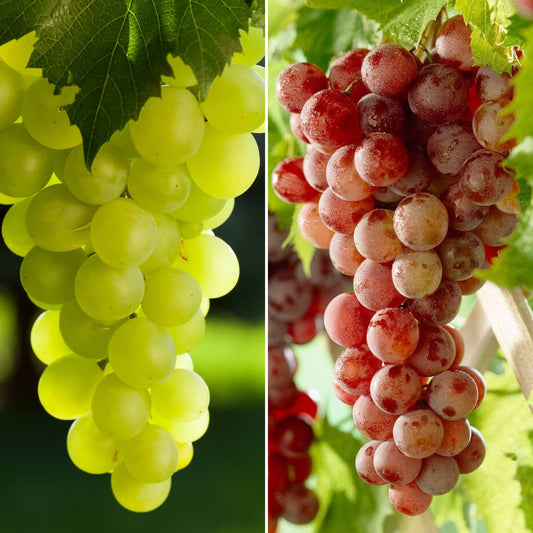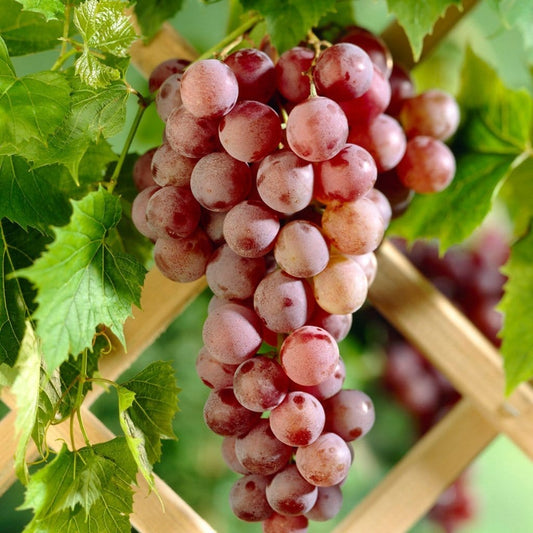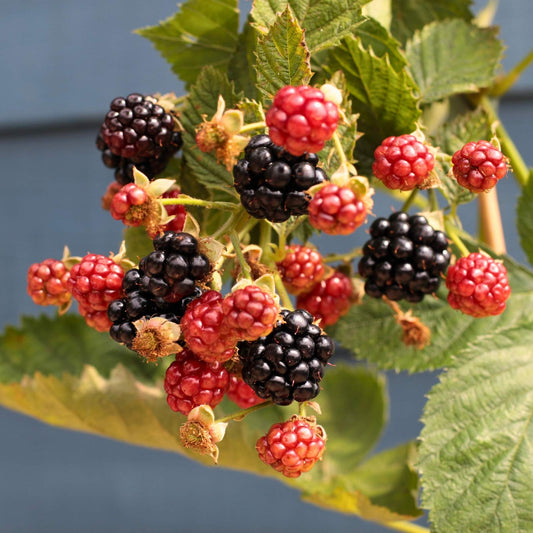10 Unusual Soft Fruits to Grow in the UK

When we think of growing soft fruit, it’s usually strawberries, raspberries and blackberries that come to mind - after all, they’re favourites for a reason. However, don’t overlook the more unusual soft fruit varieties! You won’t find many of these in the shops but we think they’re worth serious consideration - whether for their colours, flavours, nutritional benefits or their looks. Check out these 10 unusual soft fruits that we think deserve more attention. You never know, they might become your new favourites...
1. Goji Berry Plant
Goji bushes have the most gorgeous, purple flowers but it’s not just a pretty plant. The little bright red berries (also known as wolfberries) are regarded as a superfood for their high vitamin content and antioxidant properties.
Where to grow: Goji berries aren’t fussy and will thrive in a border or in pots.
Taste: Cranberries or sour cherries - they get sweeter as they mature.
Why we love it: Hardy and easy to grow, nothing phases this plant.
Did you know? Goji belongs to the nightshade plant family, which makes it a relation of potatoes, tomatoes and tobacco.
2. Honeyberry Plant
If you like blueberries, you’re going to love this; honeyberries grow on highly-fragrant honeysuckle vines and resemble elongated blueberries.
Where to grow: Honeyberry vines love a sunny spot where they can climb up a trellis, arch or pergola.
Taste: A sweet blueberry with a honeyed aftertaste. Some people say they’re like blackberries or cherries.
Why we love it: It’s like two plants for the price of one - a beautiful flowering climber which also provides you with soft fruit.
Did you know? Honeyberry is known as haskap in Japan and blue honeysuckle in Russia. It can deal with temperatures down to -47°C!
3. 'Pink Lemonade' Blueberry Bush
A pink blueberry seems like a contradiction in terms, but tasting is believing. Even the flowers are pink, and the berries themselves go through a spectrum of shades from blush to cerise as they mature.
Where to grow: In borders with acidic soil, or in pots of ericaceous compost on a sunny patio.
Taste: Pink lemonade - honestly! Many people think they taste twice as sweet as their blue relatives.
Why we love it: Super hardy, easy to grow and compact size.
Did you know? According to legend, pink lemonade was invented in 1912 when a circus employee in the US accidentally dropped cinnamon candies in a vat of lemonade.
4. Jostaberry Plant
A hybrid of gooseberries and blackcurrants, a jostaberry looks like a giant blackcurrant. It also has the hardiness of both fruits, crops heavily and goes brilliantly in jams, crumbles and pies.
Where to grow: Jostaberries are very vigorous so a garden border is best - they can tolerate a little partial shade.
Taste: Sweet gooseberries with a hint of blackcurrant.
Why we love it: Thornless plants for easy picking.
Did you know? It’s pronounced yostaberry! The name combines the first syllables of the German words for blackcurrant (johannisbeere) and gooseberry (stachelbeere).
5. 'All Gold' Raspberry Plant
These yellow raspberries bring a glint of gold to your fruit patch and are bound to be a talking point! Serve them in a fruit salad, pavlova or sundae and watch the compliments roll in. They taste as good as they look, too.
Where to grow: In rows supported by bamboo canes or wires. Next to a sunny wall or fence is ideal.
Taste: Even sweeter than the massively popular 'Autumn Bliss' variety.
Why we love it: Fruits in the autumn, giving the garden a much-needed splash of colour as well as a lovely late crop that’s still going in October.
Did you know? You can grow these in a container, as the plants are naturally compact.
6. Mulberry Tree
We all sang “Here we go round the Mulberry bush” at school, but hands up who’s actually tasted one? Like so many fruits on this list, you won’t find mulberries in the shops. Which is a bit of a shame because they’re worth making a song and dance about (sorry…).
Where to grow: Mulberries actually grow on a tree - most varieties need plenty of space in a border, although the dwarf variety 'Charlotte Russe' can be grown in a pot.
Taste: A slightly more tart version of a raspberry. Fantastic in bakes or for infusing gin.
Why we love it: Heritage fruits are awesome but they can be high-maintenance. Not this one, though, mulberry trees are very undemanding.
Did you know? The national mulberry collection has its home at Buckingham Palace and includes white and black mulberries, dwarf and weeping varieties.
7. Lingonberry Plant
If you’ve ever eaten meatballs at a well known Scandinavian furniture store, you might have encountered lingonberry jam on the side. But this well-kept Swedish secret should really be the centre of attention. Lingonberries are good to eat juiced, in cocktails or cooked into sauces and desserts and are packed with vitamins.
Where to grow: In acidic soil borders or in containers full of ericaceous compost on the patio.
Taste: Lingonberries have a tart, slightly sweet flavour similar to cranberries.
Why we love it: Heavy crops - each plant can yield up to 3kg per year!
Did you know? You don’t have to worry about using up your crop because lingonberries freeze brilliantly.
8. 'Ken's Red' Kiwi Plant
An unusual variation on the familiar green kiwi fruit, these are sweeter and more aromatic - and yes, they are red all the way through!
Where to grow: In a greenhouse or conservatory or outdoors; support your kiwi vine on a trellis or wires.
Taste: Very juicy due to high vitamin C levels, this red version is less tart than kiwis you may be used to.
Why we love it: Looks fantastic in a conservatory, and is deceptively hardy. The flowers are white and fragrant, appearing in the summer.
Did you know? The 'Ken’s Red' variety of kiwi was bred in New Zealand by Ken Nobbs, who favoured a no-nonsense style of plant naming...
Image source: Wikimedia.
9. 'Panachée' Fig Tree
Although they’re better known for flourishing in Mediterranean climates, fig trees are easy to grow in the UK. This variety is particularly eye-catching, with its stripy exterior and raspberry red flesh.
Where to grow: Fig trees grow best in large containers on a sunny patio.
Tastes like: One of the sweetest figs you can eat, with a honeyed flavour.
Why we love it: Compact, self-fertile, cold-hardy... Oh who am I kidding, I got it for its looks!
Did you know? This French heritage variety dates all the way back to the 1600s.

Image source: Wikimedia.
10. Japanese Wineberry Plant
This very attractive plant grows in curling stems that can be tied in or left to ramble. The berries are a vibrant orange-red and make a lovely jam - but beware, they taste so good they might not make it to the kitchen!
Where to grow: Wherever you’d plant raspberries. You can grow it in containers or in a mixed border.
Tastes like: The sweetest raspberry you ever ate, with a hint of sherbet.
Why we love it: Pale pink, star-shaped blossoms in early spring before the fruit arrives.
Did you know? The fine, sticky hairs that surround the growing berries are there to keep off sap-sucking insects and other pests!
Last updated: 30/10/2025





























